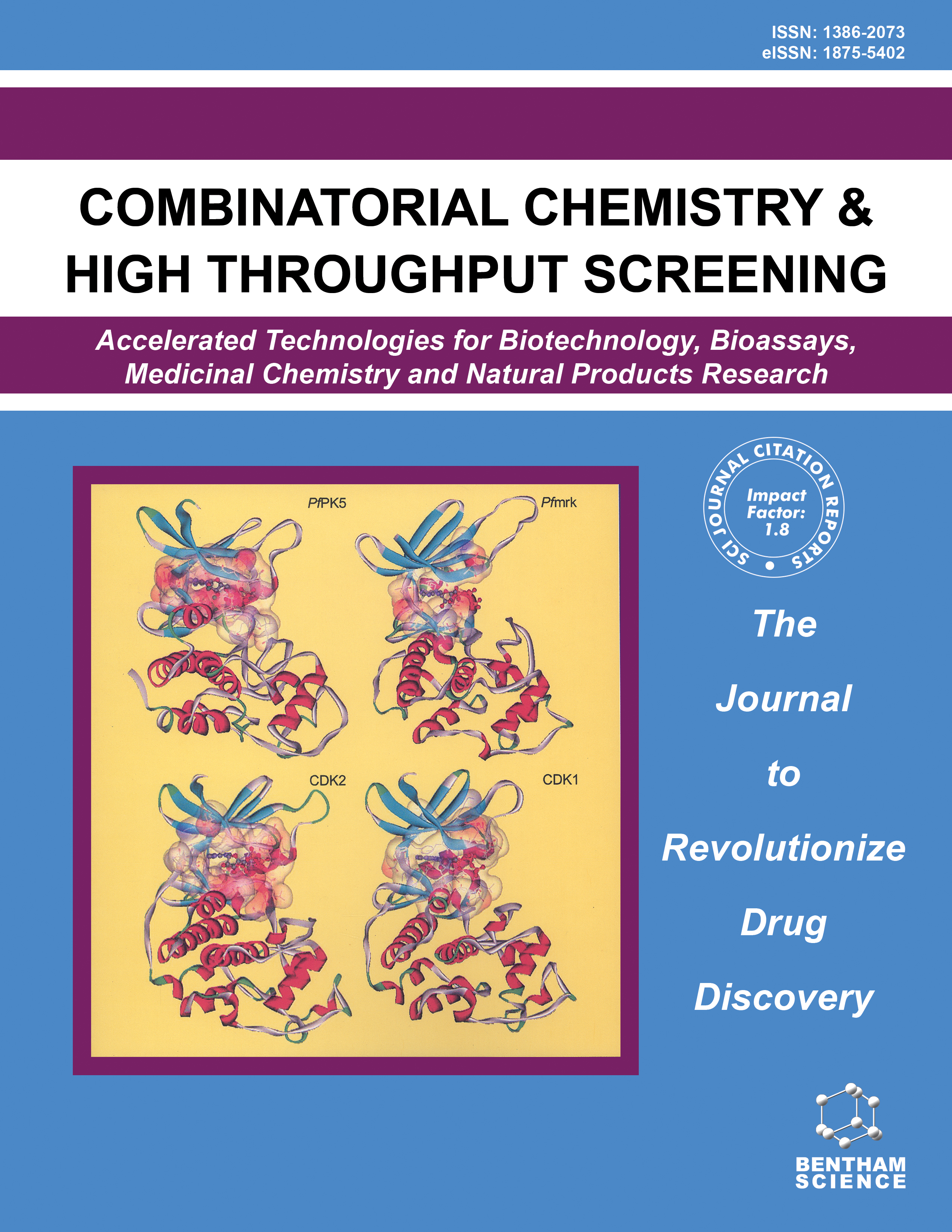- Home
- A-Z Publications
- Combinatorial Chemistry & High Throughput Screening
- Previous Issues
- Volume 4, Issue 5, 2001
Combinatorial Chemistry & High Throughput Screening - Volume 4, Issue 5, 2001
Volume 4, Issue 5, 2001
-
-
Combinatorial Events in Generation of Antibody Diversity
More LessBy R. NezlinCombinatorial association of immunoglobulin gene elements is the most important process in the creation of extreme diversity of antibody molecules. The recombination of germ-line variable gene elements V, D, and J can potentially generate approximately 6000 variable genes of human heavy chains. As joining of these elements is imprecise and is occurring with nucleotide additions or deletions, the created divers Read More
-
-
-
Recognition of Peptides by Antibodies and Investigations of Affinity Using Biosensor Technology
More LessAuthors: M.H.V. Regenmortel and L. ChoulierThe study of peptide-antibody interactions has many applications in biology and medicine. Synthetic peptides corresponding to single protein epitopes are used instead of intact proteins as reagents for the diagnosis of viral and autoimmune diseases. Furthermore, antibodies raised against peptides are useful reagents for isolating and characterizing gene products. In this review, methods for analysing the molecular basis of Read More
-
-
-
Immunoglobulin Cross-Reactivity Examined by Library Screening, Crystallography and Docking Studies
More LessAuthors: P.A. Ramsland, E. Yuriev and A.B. EdmundsonAntibodies are extremely diverse with respect to their specificities and affinities for target molecules. Despite rigorous selection, some antibodies are cross-reactive whereby they recognize their natural antigens along with other molecules. In this review, we discuss our efforts toward understanding the cross-reactivity of selected immunoglobulins. Investigations that are discussed employed screens of combinatorial pe Read More
-
-
-
The Immune Diversity in a Test Tube - Non-Immunised Antibody Libraries and Functional Variability in Defined Protein Scaffolds
More LessAuthors: E. Soderlind, R. Carlsson, C.A.K. Borrebaeck and M. OhlinTechnologies to develop and evolve the function of proteins and, in particular, antibodies have developed rapidly since the introduction of phage display. Importantly, it has become possible to identify molecules with binding properties that cannot be found by other means. A range of different approaches to create general libraries that are useful for the selection of such molecules specific for essentially any kind of target have Read More
-
-
-
Of Minibody, Camel and Bacteriophage
More LessAuthors: C.K. Vaughan and M. SollazzoThis review describes the design process from conception through realisation and optimisation of a minibody - a minimised antibody. The result was a proteinaceous molecule of novel fold and metal binding activity. We explain how combinatorial approaches, using phage display libraries, were used to randomise loop regions of the minibody. Variants were then selected for desired activities including in vitro inhibition of human i Read More
-
-
-
Antibody-based Fluorescence Polarization Assay to Screen Combinatorial Libraries for Sweet Taste Compounds
More LessAuthors: D.S. Linthicum, J. Patel and N. CairnsTechnological advances in instrumentation, chemical synthesis methods, molecular biology and biochemistry have fueled the recent growth in high throughput screening. Assays are available in a vast range for formats, including fluorescence, luminescence, absorbance, and scintillation detection. Antibodies represent a powerful tool for novel compound discovery and their utility in this regard should not be underestimat Read More
-
-
-
Antibody-Ligand Interactions: Computational Modeli ng and Correlation with Biophysical Measurements
More LessAuthors: D.S. Linthicum, S.Y. Tetin, J.M. Anchin and T.R. LoergerSeveral new aspects of computer-assisted molecular modeling strategies and biophysical techniques, such as fluorescence spectroscopy, circular dichroism, and absorption spectroscopy, have proved useful in the analysis and description of antibody-ligand interactions. The molecular features involved in determining the specificity of antibody-ligand interactions, such as electrostatics (e.g. partial charges, salt bridges, pi-cation Read More
-
Volumes & issues
-
Volume 28 (2025)
-
Volume 27 (2024)
-
Volume 26 (2023)
-
Volume 25 (2022)
-
Volume 24 (2021)
-
Volume 23 (2020)
-
Volume 22 (2019)
-
Volume 21 (2018)
-
Volume 20 (2017)
-
Volume 19 (2016)
-
Volume 18 (2015)
-
Volume 17 (2014)
-
Volume 16 (2013)
-
Volume 15 (2012)
-
Volume 14 (2011)
-
Volume 13 (2010)
-
Volume 12 (2009)
-
Volume 11 (2008)
-
Volume 10 (2007)
-
Volume 9 (2006)
-
Volume 8 (2005)
-
Volume 7 (2004)
-
Volume 6 (2003)
-
Volume 5 (2002)
-
Volume 4 (2001)
-
Volume 3 (2000)
Most Read This Month
Article
content/journals/cchts
Journal
10
5
false
en

Most Cited Most Cited RSS feed
-
-
Label-Free Detection of Biomolecular Interactions Using BioLayer Interferometry for Kinetic Characterization
Authors: Joy Concepcion, Krista Witte, Charles Wartchow, Sae Choo, Danfeng Yao, Henrik Persson, Jing Wei, Pu Li, Bettina Heidecker, Weilei Ma, Ram Varma, Lian-She Zhao, Donald Perillat, Greg Carricato, Michael Recknor, Kevin Du, Huddee Ho, Tim Ellis, Juan Gamez, Michael Howes, Janette Phi-Wilson, Scott Lockard, Robert Zuk and Hong Tan
-
-
- More Less

